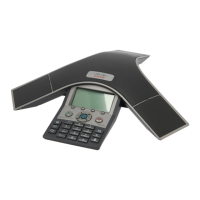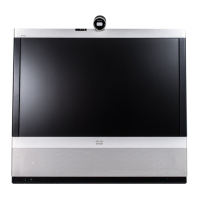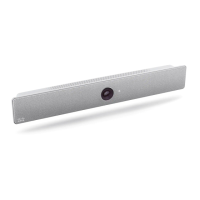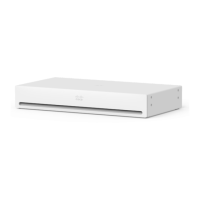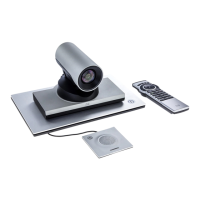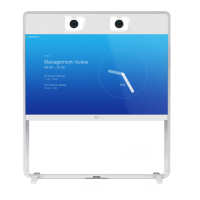9-8
Cisco Unified IP Conference Station 7937G Administration Guide for Cisco Unified Communications Manager 6.0
OL-11560-01 Rev. B0
Chapter 9 Troubleshooting and Maintenance
Conference Station Resets Unexpectedly
Checking Static IP Address Settings
If the conference station has been assigned a static IP address, verify that you have entered the correct
settings. See the
“Network Configuration Menu” section on page 4-5 for more information.
Verifying Voice VLAN Configuration
If the conference station appears to reset during heavy network usage (for example, following extensive
web surfing on a computer connected to the same switch as conference station), it is likely that you do
not have a voice VLAN configured.
Isolating the conference stations on a separate auxiliary VLAN increases the quality of the voice traffic.
See the
“Understanding Interactions with Other Cisco Unified IP Communications Products” section on
page 2-1 for details.
Eliminating DNS or Other Connectivity Errors
If the conference station continues to reset, follow these steps to eliminate DNS or other connectivity
errors:
Procedure
Step 1 Use the Erase softkey to reset conference station settings to their default values. See the “Resetting or
Restoring the Conference Station” section on page 9-11 for details.
Step 2 Modify DHCP and IP settings:
a. Disable DHCP.
b. Assign static IP values to the conference station. Use the same default router setting used for other
functioning conference stations.
c. Assign TFTP server. Use the same TFTP server used for other functioning conference stations.
See the “Network Configuration Menu” section on page 4-5 for instructions on modifying the above
three settings.
Step 3 On the Cisco Unified Communications Manager server, verify that the local host files have the correct
Cisco
Unified Communications Manager server name mapped to the correct IP address.
Step 4 From Cisco Unified Communications Manager Administration, choose System > Server to locate the
server, and then click the server name. Verify that the server is referred to by its IP address and not by
its DNS name.
Step 5 From Cisco Unified Communications Manager Administration, choose Device > Phone to locate the
conference station, and then click the conference station name. Verify that you have assigned the correct
MAC address to this conference station. For information about determining a MAC address, see the
“Determining the MAC Address of a Conference Station” section on page 2-9.
Step 6 Power cycle the conference station.
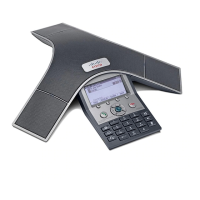
